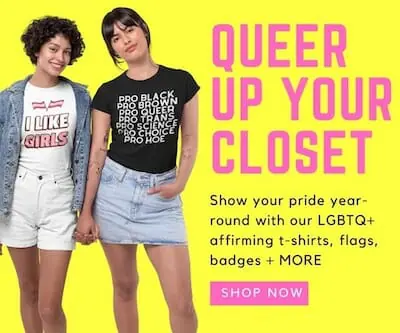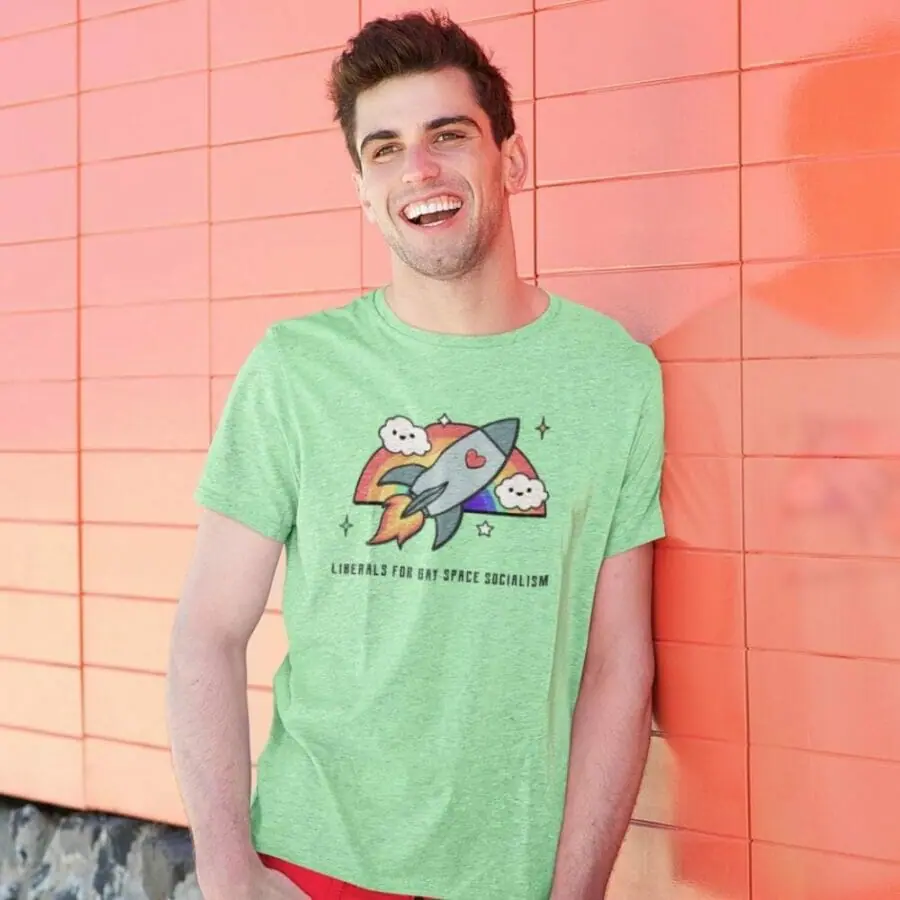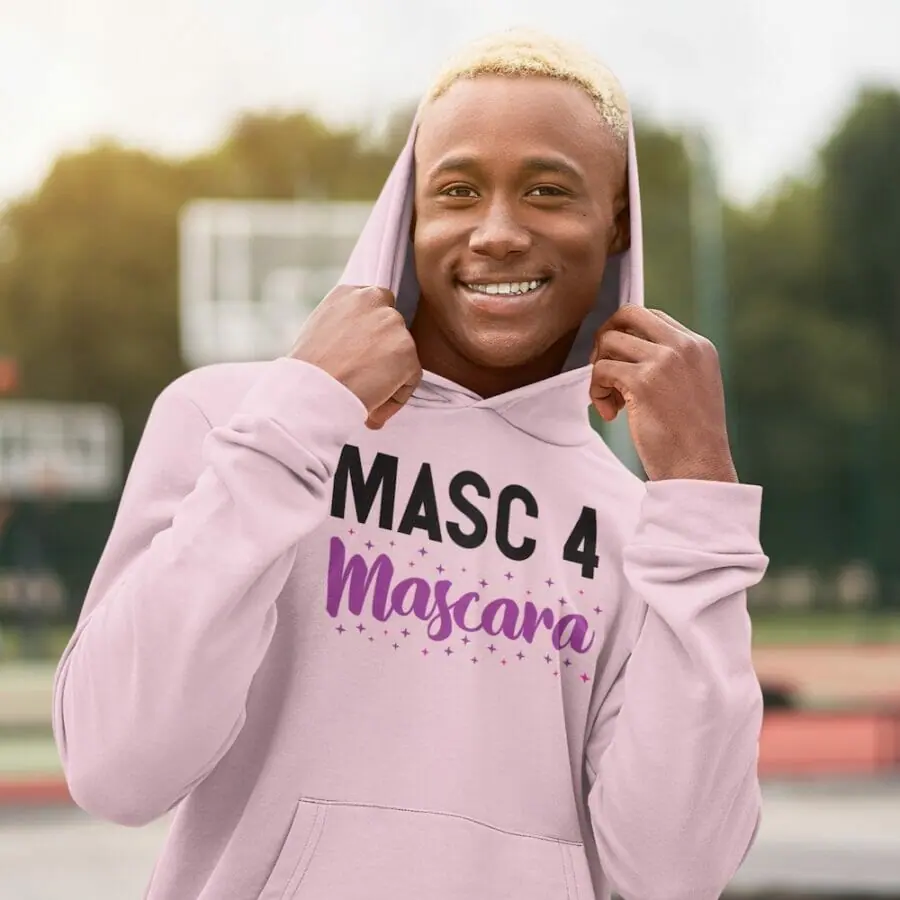June is the month of pride. A month for watching the best LGBT Documentaries. A month for that calls for everyone to celebrate LGBT people and their community…
Of course, a month isn’t needed for this celebration to happen, but it’s an important tool to put queer issues into the media agenda. This is the month when everyone is encouraged to talk about queerness, to understand the different issues and struggles within the community, all the while being prideful and accepting.
June isn’t only the month of pride, but also the month of memory: in order to talk about the LGBT community, we need to know both its history and its people. To remember is to have a place in our thoughts for these stories when we look at the future. The past isn’t as far as it seems. The lessons it can teach us are sure to be key in the fights of the future.
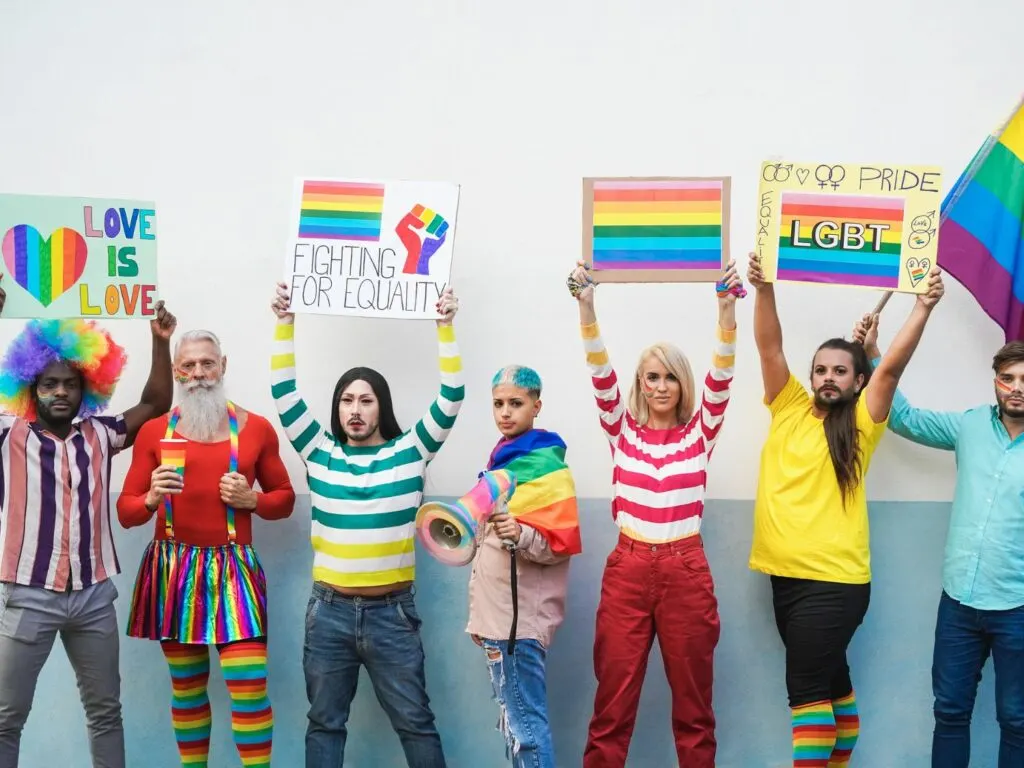
That’s why documentaries are such a key part of the LGBT movement. They can capture lives and stories in a depth that very few pieces of media can replicate. Through some of the documentaries on this list, you’ll be transported to a different time, one that may seem unrecognizable: with how quickly the world is changing, it can be hard to recognize the things that happened in the not-so-distant past.
Yet you’ll find that some of these LGBT documentaries tell stories that are much closer to our current reality than we might have thought otherwise. The documentaries in this list are all essential to understand how today’s LGBT community came to be. They are a great way to reflect on the past and to look to the future with hope and pride.
Wondering where to watch? It depends on where you live in the world and which streaming services you have. We link to the streaming service we watch on in each case - be it Netflix, Amazon Prime, Apply TV+, or elsewhere.
You can get one month free of Amazon Pride (or a 6-month trial for students) of Amazon Prime and also get immediate access to FREE Two Day shipping, Amazon Video, and Music. While you won't be charged for your free trial, you'll be upgraded to a paid membership plan automatically at the end of the trial period - though if you have already binged all these, you could just cancel before the trial ends.
Apple TV+ also has a one-week trial, and Hulu has a one-month trial (which can be bundled with Disney!). Another option might be using a VPN to access Netflix titles locked to other regions. Netflix is now available in more than 190 countries worldwide and each country has a different library and availability. US Netflix is (understandably) one of the best.
While we wish everything could just be in one place - for now, it seems these are the best streaming platforms to watch on.
In this article we will cover...
- Are You Proud? (2019)
- Circus of Books (2019)
- How To Survive A Plague (2012)
- We Were Here (2011)
- Before Stonewall: The Making of a Gay and Lesbian Community (1984)
- The Death and Life of Marsha P. Johnson (2017)
- A Secret Love (2020)
- Do I Sound Gay? (2014)
- Disclosure: Trans Lives on Screen (2020)
- Kumu Hina (2014)
- Queer Japan (2019)
- I Am Divine (2013)
- Paris Is Burning (1990)
Are You Proud? (2019)
Are You Proud?, by Ashley Joiner, is a documentary with a very colorful subject. It offers a look at the history of the Pride parades that have taken place in the United Kingdom for the last five decades. All the while, the film also shows the way that the public used to view proud queer people.
The film beings in the 1950s, chronicling the lives of those who were gay but didn’t have a community that would take care of them if they came out and their loved ones turned away. Then it takes a look at the 60s, when the countercultural scenes were beginning to emerge and new safe spaces for queer folks were becoming more and more popular.
Of course, the documentary also covers how the Stonewall riots and the founding of the Gay Liberation Front influenced the queer activist in London: after years of protests, the first Londoner Pride march took place in the year 1972.
One of the best things that the documentary has to offer is its incredible footage taken in modern-day Pride marches. If you’ve never had the chance to go to one of these events, this film is for you. Knowing the heroic history behind marches will make you appreciate them much more.
Circus of Books (2019)
Those who have lived in West Hollywood and frequent the gay scene may have heard the name “Book Circus”. First opened in the 1960s, the Circus was a bookstore that functioned as one of the few safe spaces at the time for gay people, as well as for the whole LGBT community. It was a common meeting spot and a popular dating destination: the place offered lots of books, where most of which had to do with gayness and being gay, as well as tons of pornography.
The importance of this location is often overlooked by those who only think of it as a porn-shop. But Book Circus was at the heart of gay and queer L.A. culture. This place witnessed the comings and goings of the most important LGBT-rights activists of the time.
Throughout its years active, it welcomed those who were unwelcome almost everywhere else, becoming a great place to discuss and share one’s own experiences as a queer person.
Circus of Books chronicles the days before the closing of the last Book Circus location, featuring interviews with many gay locals who frequented the site, as well as with the original owners: Karen Mason and Barry Mason. The film was directed by their daughter, Rachel Mason, a recognized artist who grew up during the days when the store was visited the most.
How To Survive A Plague (2012)
It’s no exaggeration to say that the AIDS epidemic was the worse thing to happen to the gay community. For one, it took away the lives of thousands of gay men: by 1995, almost a tenth of the gay population had died due to the virus. Yet not only did the community have to brace against this horrendous situation, but they were also met with the anger and disdain of the general public.
The AIDS epidemic gave way to some of the most harmful and resilient stereotypes about the community. And we’ve got the sensationalist and bigoted media to thank for that. Even though it seems like a topic from the past, it’s important to be aware of the historical significance of AIDS, of how the whole world turned against the gay community in its time of greatest need.
How to Survive a Plague was directed by David France, an investigative journalist who was present during the AIDS epidemic and worked together with LGBT associations to help spread awareness about the virus. There’s an even sadder detail to this part of the story: the film is dedicated to France’s late partner, who died in 1992 due to AIDS-related complications.
What’s most awe-striking about the film is that it’s mostly composed of archive footage from news stations and public events? This means that viewers can see the actual epidemic unfold: how the media and the public reacted and how the LGBT associations fought both against the virus and the general opinion of non-gay people.
We Were Here (2011)
We Were Here, by David Weissman and Bill Weber, is a one of the best LGBT documentaries / films that chronicles the AIDS epidemic crisis in the city of San Francisco. Instead of exclusively using archive footage like How to Survive a Plague, this film takes a different approach. It focuses on five singular people living in San Francisco during the outbreak, with each of them telling the interviewer about the role they played and how they helped the community in this extremely trying time.
At its core, the stories told through the documentary all are about the same thing: love. The love for those who are close to us and for whom we want to fight, but also the love for the community that we are a part of. There is no denying that all of the people featured in this documentary were marked by a deep sense of loving and caring. Their constant effort to somehow help their community is proof enough of that.
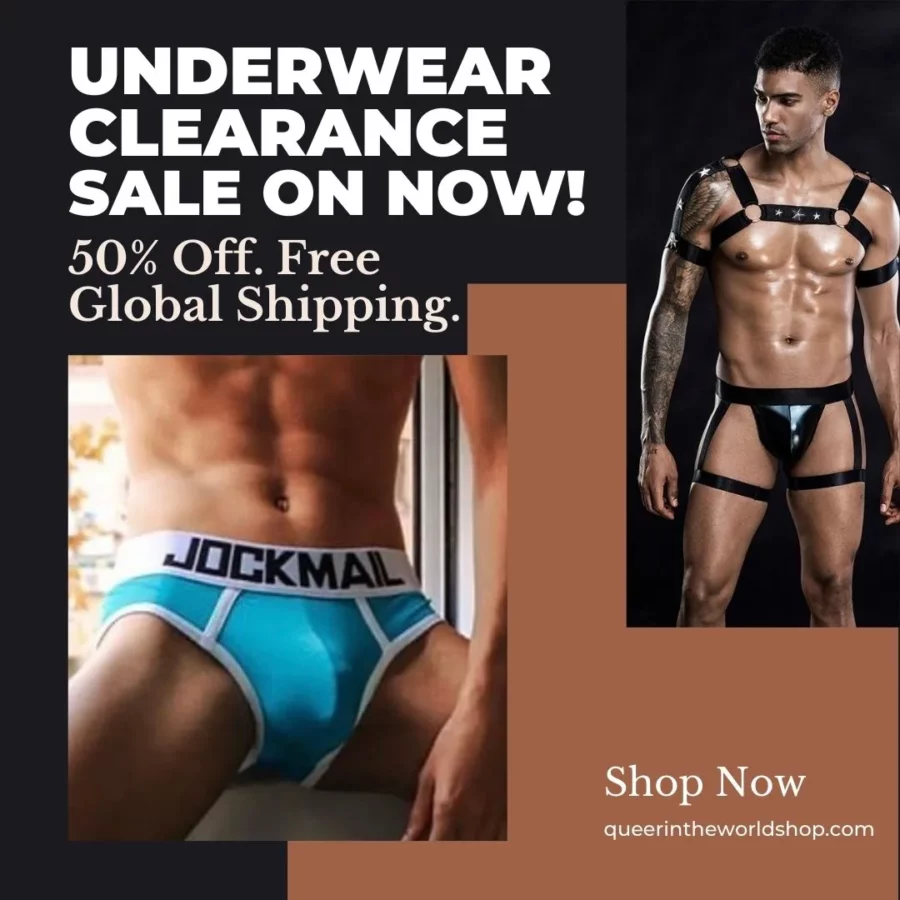
Before Stonewall: The Making of a Gay and Lesbian Community (1984)
Even though many years (even decades) have passed since its release, Before Stonewall, by Greta Schiller and Robert Rosenberg, still stands as one of the most important documentaries produced by and about the gay and lesbian community. Not only as an informative piece that offers a comprehensive portrayal of the beginnings of these communities but also as a historical product that tells us a lot about what people at the time (1984) thought about queerness.
While many of its creators haven’t enjoyed much success since the documentary’s release, there’s one who sticks out. Rita Mae Brown was a famous feminist author and activist who had a big role to play in the protests of the time. While not shown in the film, Brown actually serves as a narrator.
The Stonewall riots are an event that is the key to understanding the LGBT community today. Since the tumultuous night of June 28 of 1969, when queer people from all over New York City rioted against police brutality, the fight for LGBT rights hasn’t stopped growing. Before Stonewall chronicles the lead-up to these riots and gives a clear picture of why they are such an important symbol of the fight for equal rights.
The documentary was followed in 1999 by After Stonewall, which chronicled the progress that the LGBT community had achieved in the fifteen years between the two films.
The Death and Life of Marsha P. Johnson (2017)
The Death and Life of Marsha P. Johnson is another documentary directed by the great David France. This time, France tackles some of the most inspiring figures in the fight for LGBT rights.
Based on the investigation by Victoria Cruz, the film delves into the mysterious suicide of trans-right activist Marsha P. Johnson. As the documentary shows, Cruz was a contemporary of Marsha who wanted to know what had really happened to her peer and friend. Yet the film isn’t only about Marsha’s death: it’s also a celebration of her life, her work and all the great things she accomplished.
The figure of Marsha doesn’t get the recognition it deserves: she was an African-American drag queen who fought for the rights of the whole LGBT community. She was one of the founding members of the Gay Liberation Front, as well as the leader of several transgender liberation groups. She even took part in protests that took place after the initial Stonewall riots.
With this incredible life behind her, it wouldn’t just focus on Marsha’s death. The documentary does a great job at balancing these two aspects of Marsha’s story. It can’t be overstated how important it is to be aware of figures like Marsha when facing the future fights of the LGBT community.
A Secret Love (2020)
One would think that telling the story of a life-long romance in under two hours while never losing the viewers’ attention would be impossible, but Chris Bolan did it.
A Secret Love, the documentary that took Netflix by storm in 2020, captures something essential about lesbian love. It tells the story of Terry Donahue, a former professional baseball player, and her partner, Pat Henschel, two women who, even though they had been together for over six decades, never let anyone know about their intimate relationship.
The documentary follows two narrative lines: that of the young Terry and Pat, who documented their budding romance through Super 8 video cameras, and that of the old Terry and Pat, who are finally telling their story to their grand-nephew (Bolan, the director).
Perhaps what’s most striking about the documentary is the relevance of Terry and Pat’s experiences as closeted lesbians. Not being able to tell your family who you really are and the importance of having a group of people, a found family, where you can truly express yourself. These are only a few of the aspects of Terry and Pat’s where the viewers will see themselves reflected.
Do I Sound Gay? (2014)
Do I Sound Gay?, by David Thorpe, is a fascinating documentary that explores how that language and the way we speak show the way we see the world.
The film chronicles the discoveries of an experiment conducted by Thorpe, who is gay himself, after realizing that his voice and his speech patterns seem to be affecting how people perceive him: he believed that his “gay-sounding voice” was an impediment and a burden. But after seeing several speech therapists, Thorpe realized that he had begun to speak like that around the time when he came out.
From this premise, the documentary explores the way that gay men speak and proposes several answers as to why they do it and what consequences, wanted or not, it has. Perhaps what’s most interesting about this documentary is that the research showed that many gay men spoke with internalized homophobia. Sometimes they were reappropriating harmful terms and making them their own but other times they were perpetuating harmful stereotypes about themselves, all through their speech.
This documentary will give you awareness of these kinds of subtle hints in the way people talk. Do I Sound Gay? is an important resource to understand that sometimes we can speak things we didn’t want to say.
Disclosure: Trans Lives on Screen (2020)
Disclosure: Trans Lives on Screen, by Sam Feder, is an in-depth exploration of how transgender people are portrayed in media, particularly in big-budget Hollywood movies. It is already shaping up to be one of the best must-watch LGBT documentaries of the decade. T
he film dives deep into what these representations mean and how they can affect the way people perceive transgenderism. While it’s not a narrative feature, you’ll be surely hooked by its analysis and the many questions that it poses.
It’s a truly important film to watch, since the effects that media can have on us is one of the most talked-about topics in recent years, particularly when it comes to representation. To think that one should feel seen by the media creators and companies is to think about media representations and their effects.
The most interesting thing about Disclosure: Trans Lives on Screen is that it stands as a great argument on how sometimes no representation at all it’s better than having bad representation. In the case of transgender people, their cinematic history has seen disaster after disaster.
Yet there seems to be hope: in recent years we’ve seen much more examples of great transgender representation. One can only hope that the producers in Hollywood take note of how films like Boy Meets Girl do it.
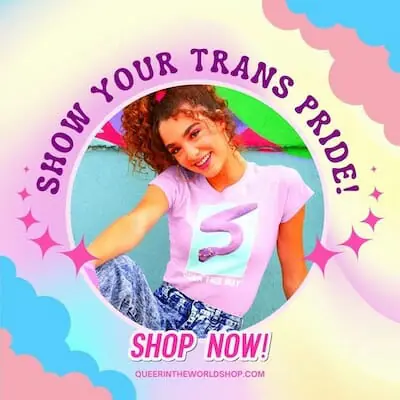
Kumu Hina (2014)
This fascinating documentary tells the real-life story of Hina Wong-Kaulu, a Native Hawaiian activist who identifies herself as a māhū, a “third gender”, a classification that describes someone who is neither male nor female.
Choosing to be called “third gender” instead of non-binary is a clear activist choice on the part of Hina. She wants the Hawaiian people to remember their old traditions and to remember the place of the māhūs in their society: they were respected by everyone in the tribe and often took on the role of caretaker, healer and or teacher.
Kumu Hina (meaning Teacher Hina) was directed by Dean Hamer and Joe Wilson, who documented Hina’s life for a whole year. This wasn’t any year, however: it shows how Hina taught Ho’onani, a young Native Hawaiian, how to be a māhū too. It’s a truly captivating documentary that shows that the knowledge held by ancient traditions shouldn’t be discarded because sometimes it offers more accurate points of view than the ones we have in this day and age.
Queer Japan (2019)
One could argue that Japan has a long history of queerness, from the homosexual traditions of old Buddhist monks to the beautifully cross-dressed actors that practiced the kabuki during the Edo period.
But the truth is that in today’s day and age the Japanese gender norms are stricter than ever. It’s not just gender repression, but something far greater. The Japanese people live under very tight social restraints, meaning that one has very few accepted ways to express one’s individuality. Fighting against these social norms is hard and it truly takes a village.
Queer Japan, by Graham Kolbeins, shows the many points of resistance against Japan’s strict gender norms: it’s an ensemble film that follows several Japanese people who identify themselves with each of the sexual orientations and gender identities contained within the LGBTQ acronym. These people come from a wide range of backgrounds, with many of them being activists, artists or academics.
But they all have something in common: they all fight together against a culture that forbids them from expressing themselves, from showing the world who they are and how they see the world. The documentary dives deep into their lives and their struggles to live in such a society: many have lost contact with their families and have found new ones in the welcoming embrace of the community.
I Am Divine (2013)
I Am Divine, by Jeffrey Schwarz, is a documentary chronicling the life of the drag performer known as Divine. If you aren’t familiar with Divine, Pink Flamingos is the way to go: this cult classic film by the captivating filmmaker John Waters tells the story of “The filthiest person alive” (played by Divine) as they go on to grotesque and bizarre adventures.
It may not be everyone’s cup of tea, but the several collaborations between Waters and Divine were some of the most successful countercultural pieces of art ever made. While Divine passed away in 1988, the director interviewed both their mom and John Waters to build an accurate picture of who they were.
Born to a conservative family in Baltimore, the young Harris Glenn Milstead had always gone against the grain. Even from his infancy, he enjoyed dressing as a woman after working as a hairdresser. Quickly he started frequenting the several countercultural sites in the city and, just a few years into the sixties, the persona of “Divine” had been born. The documentary shows their many collaborations with John Waters, as well as their death at the age of forty-two.
Paris Is Burning (1990)
Paris is Burning is an ode, a love letter, to the New York City ball culture. Director Jenny Livignston, one of the founding members of the New Queer Cinema movement, painted a vivid picture of this time, where cross-dressing masquerade balls took place every weekend and garnered the attention of the whole community. According to those who experienced it, it was an incredible time to be alive and drag.
The documentary is a must-watch. If not for its accurate depiction of ball culture, then for the influence it had on queer culture as a whole. Many queer people quote the iconic lines said in this film constantly. Many also feel reverence for these drag queens of the past. It’s no surprise that the film has gone on to inspire many queer creators in their own work: most notably, the show Pose takes Paris is Burning as a direct inspiration.
One of the most interesting aspects of the film is the many interviews that Livingston conducted with the most important figures of the culture. These short monologues are incredibly enlightening in terms of how ball culture and queerness, in general, was thought of and felt during those days. It’s striking to see how many of the cultural aspects that made ball culture are still relevant today thanks to shows like RuPaul’s Drag Race.
